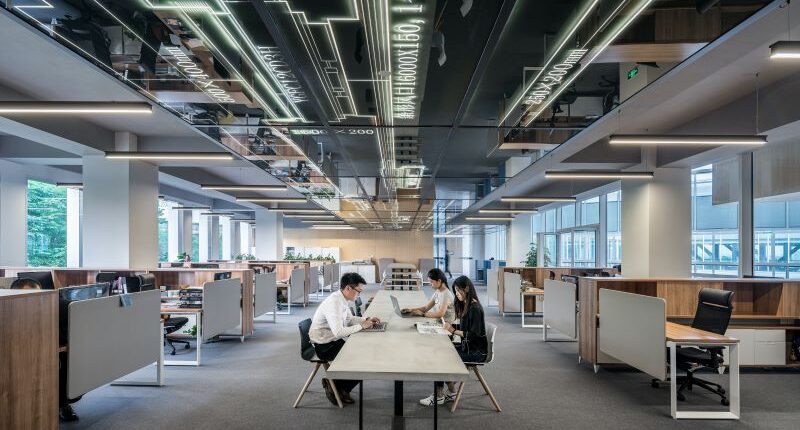- Smaller cities have outperformed Sydney and Melbourne
- Sydney tenants embrace flexibility, leading to increased sublease space
- Brisbane maintains historical low sublease vacancy, driven by expanding tenants
Workers in the smaller capital cities are headed back to the CBDs faster, leading to reduced sublease availability, according to a new report.
Sublease space in Brisbane, Perth and Adelaide now represents less than 0.5% of each city’s total office stock, a fraction of the current availability in Melbourne (2.2% of total stock) and Sydney (2.4%) according to CBRE.
Sublease availability across Australia increased by 0.6% to 258,576 square meters in the second quarter, representing 1.6% of total office stock. Sydney experienced the largest quarter-on-quarter increase, with sublease space now accounting for 2.4% of stock, up from 2% in the first quarter. While Melbourne saw a decline from 2.4% to 2.2% due to lease deals reducing the volume of stock.
CBRE’s Head of Office Research Tom Broderick said the smaller markets have seen lower availability for several reasons.
“The return to office and physical occupancy has generally been better in these markets,” said Broderick.
“Also, the average tenant size is smaller, and generally it has been the larger occupiers who have looked to consolidate their footprints.
“These markets also have less exposure to financial and technology companies, which have contributed the most to the sublease market of late.”
Tom Broderick, CBRE’s Head of Office Research
Brisbane is seeing strong leasing conditions with the city’s availability representing just 0.3% of stock – the lowest level nationally.
Perth’s sublease availability dropped by almost half to 0.4%, with a buoyant economy limiting the amount of tenant contraction, while Adelaide’s availability remained relatively steady at 0.4%.
Sublease availability by market

Source: CBRE
Sydney tenants seeking flexibility
CBRE Director, Office Leasing, Chris Fisher said the recent increase in sublease space across Sydney comes as businesses embrace flexible working arrangements.
“Combine this with economic headwinds and a desire to cut costs and offloading under-utilised office space is an easy solution,” said Fisher.
“However, it is certainly not a blanket approach across the CBD, with the majority of tenants moving to increase their footprint.
He said the tech sector, which has embraced hybrid working, is seeing sub-lease space increase, while a number of tech firms “banked” space when they were growing exponentially, which they no longer need.
“Large corporates also feature, with their slower return to work edicts resulting in surplus office space, with M&A activity being another driver, leaving some space redundant as businesses merge their operations.
“The pleasing part is there is activity in the market and healthy turnover in the sublease space.
“Whilst decision times are slower, underlying demand is strong and the benefits of sublease space with quality fitout and below market rent is being embraced by sections of the market.”
Change in sublease space
| Adelaide CBD | Brisbane CBD | Melbourne CBD | Perth CBD | Sydney CBD | National | |
| Jun-23 | 5,650sqm | 7,507sqm | 112,998sqm | 7,831sqm | 124,590sqm | 258,576 sqm |
| q-o-q Change | 550sqm | – 4,439sqm | – 9,075sqm | -5,831sqm | 20,238sqm | 1,461 sqm |
| y-o-y Change | 750sqm | – 10,145sqm | -25,948qm | 673sqm | 27,692sqm | – 6,978 sqm |
Source: CBRE
Busy sublease market
CBRE Head of Office Leasing, Victoria, Ashley Buller, a consistent trend has emerged in Victoria’s commercial real estate market.
“Many of the largest deals, excluding pre-commitments and new building deals, have been finalised in sublease space,” said Buller.
“Docklands, in particular, has emerged as a prominent location for these opportunities, offering large floor plates, modern fitouts, attractive commercial terms for tenants, and long lease-tails.
He said that a significant percentage of tenants securing these sublease options are those seeking to centralise their operations.
“They are relocating from suburban and metro locations into the city, resulting in positive net absorption for the CBD.
“The availability of large floor plates, combined with new and appealing fitouts, makes Docklands an enticing choice for companies seeking to optimise their workspace and accommodate their growing needs.”
Historical lows
CBRE State Director, Office Leasing, Chris Butters said Brisbane’s sublease vacancy remains at historical lows, as the vast majority of the city’s occupants are either in a holding or expansionary phase.
“Brisbane’s office market has a limited exposure to companies downsizing globally, such as major IT, software or banking/finance organisations, providing insulation from this mass reduction in space utilisation,” said Butters.
“Further fuelling the downward trajectory of overall sublease volumes is the increasing appetite from government, engineering and resource-related businesses seeking immediate fitted out accommodation for growth and or/project-based requirements.”
He said he doesn’t anticipate any major spikes in sublease availability in the near term.
“That said, those options which do materialise will be met with a reasonable level of enquiry.”
CBRE Senior Director, Office Leasing Andrew Denny said Perth has negligible sublease availability, with a near record low volume of just 7,831 sqm – reflecting strong occupier demand which shows no signs of abating.
“There is particularly strong demand for quality fitted space, which many sublease options provide,” said Denny.
“Expanding tenants remain the dominant theme in the market.
“This is almost entirely due to Western Australia’s strongly performing mining sector, and its flow on impact to many other business sectors.”
He said for the first time in many years Perth is also experiencing strong demand from both the Federal and State Governments, with multiple positive net absorption requirements.








